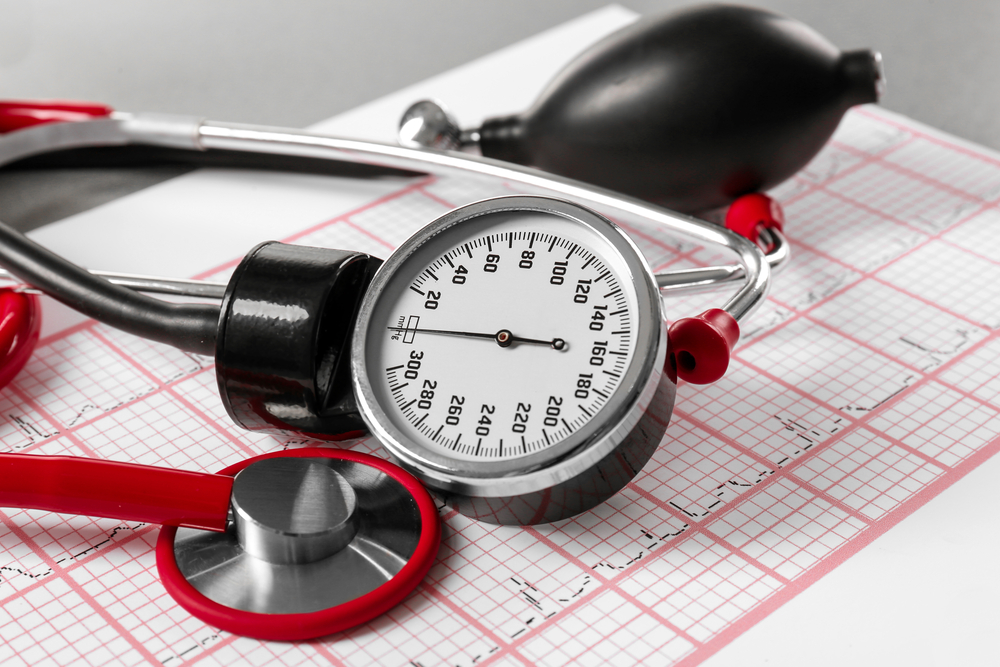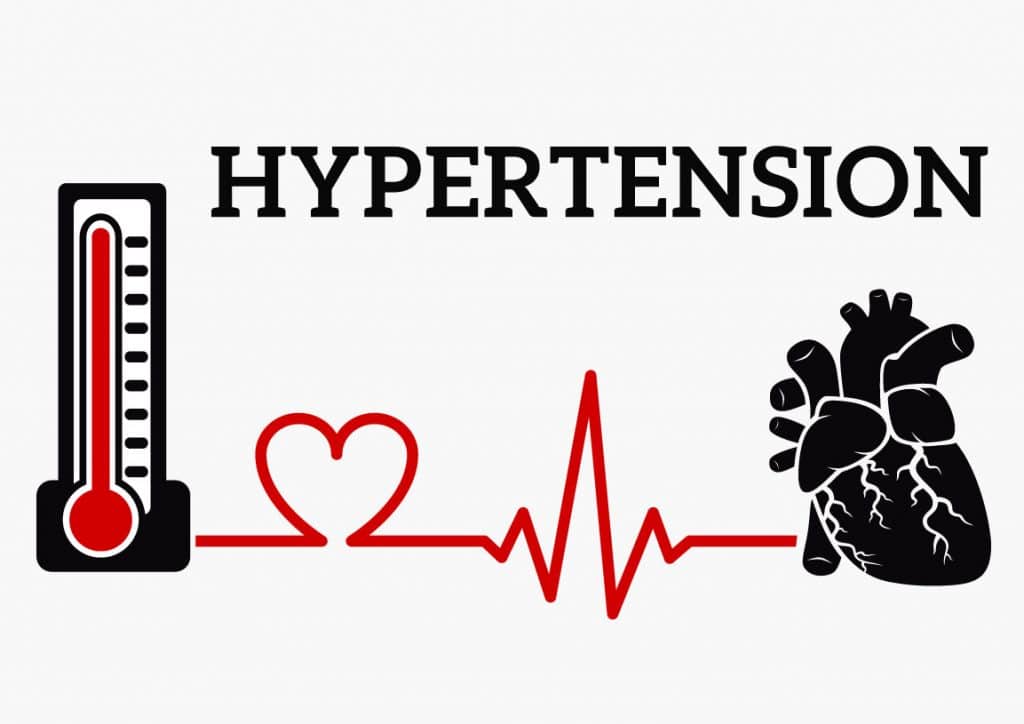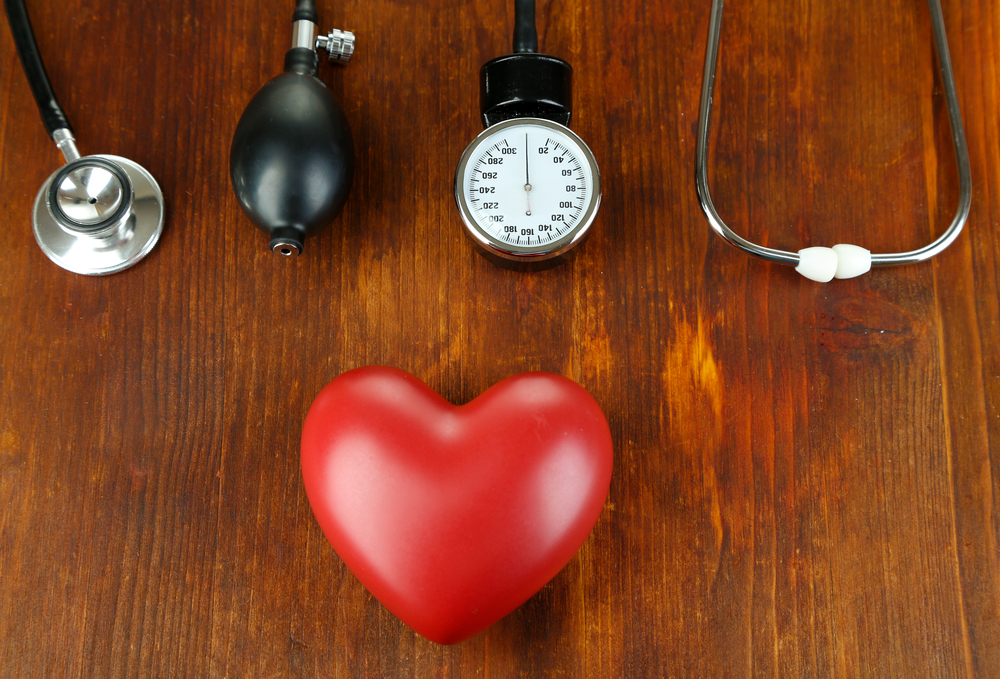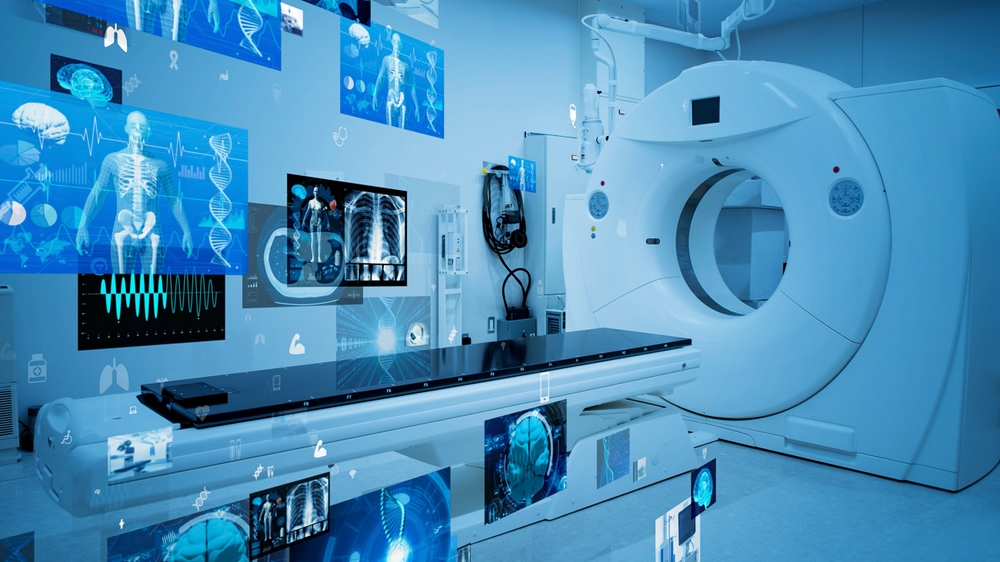An Overview of Follicular Lymphoma? Symptoms, Causes, and Treatments
February 11, 2025 11:57 - no comments yet
Follicular lymphoma is a type of non-Hodgkin lymphoma that grows slowly. It affects the lymphatic system, which is part of the body's immune defense. Many people do not notice symptoms in the early stages. This makes early detection difficult.
Furthermore, understanding its causes and symptoms can help in seeking timely medical advice. Researchers are still studying the exact reasons behind this disease. However, some risk factors have been identified.
This blog will cover the causes of Follicular Lymphoma , its symptoms, and treatment options. It will also discuss what to expect after diagnosis. If you or a loved one is dealing with follicular lymphoma, this guide can provide useful insights.
What is Follicular Lymphoma?
Follicular lymphoma is a cancer that starts in white blood cells. It develops in the lymph nodes and other lymphatic tissues. This type of lymphoma grows slowly but can spread to different parts of the body.
How It Develops
The lymphatic system includes lymph nodes, spleen, and bone marrow. It helps the body fight infections. In follicular lymphoma, abnormal B-cells grow uncontrollably. These cells accumulate in the lymph nodes, causing swelling.
How It Differs from Other Lymphomas
Some lymphomas grow quickly and require immediate treatment. However, follicular lymphoma progresses slowly. Many people live with it for years without symptoms. Doctors often monitor the condition before deciding on treatment.
Why Early Detection is Difficult
Follicular lymphoma does not always cause pain or discomfort. As a result, people may ignore swollen lymph nodes. Regular health check-ups can help detect this condition early.
What Are the Symptoms of Follicular Lymphoma?
Many people do not experience symptoms at first. As the disease progresses, certain signs become noticeable.
Common Symptoms
- Swollen lymph nodes – Painless lumps in the neck, armpits, or groin.
- Fatigue – Feeling tired even with enough rest.
- Unexplained weight loss – Losing weight without dieting or exercise.
- Fever – Persistent low-grade fever without infection.
- Night sweats – Excessive sweating during sleep.
When to See a Doctor
Furthermore, any persistent swelling or unusual symptoms should be checked by a doctor. If symptoms last more than a few weeks, a medical evaluation is necessary. Early detection can improve treatment options.
Causes of Follicular Lymphoma: What Do We Know?
Doctors do not know the exact cause of follicular lymphoma. However, research has identified possible factors that may contribute.
Genetic Mutations
Many cases of follicular lymphoma involve a genetic mutation. The BCL2 gene changes, allowing cells to survive longer than normal. This leads to the uncontrolled growth of B-cells.
Environmental and Lifestyle Factors
Additionally, exposure to certain chemicals may increase risk. Pesticides, herbicides, and industrial toxins could contribute to cell changes. However, more studies are needed to confirm this link.
Weakened Immune System
Furthermore, people with weakened immune systems have a higher risk. Organ transplant recipients and those with autoimmune diseases may be more vulnerable.
Unclear Causes
Lastly, in many cases, no clear cause is found. Researchers continue to study why some people develop this condition while others do not.
How is Follicular Lymphoma Diagnosed?
Early diagnosis helps in planning effective treatment. Doctors use several tests to confirm follicular lymphoma.
Physical Exam and Medical History
Doctors check for swollen lymph nodes and ask about symptoms. They also review the patient’s medical history for risk factors.
Blood Tests and Imaging
Moreover, blood tests check for abnormal cell counts. Imaging tests like CT scans and PET scans help locate swollen lymph nodes and affected organs.
Lymph Node Biopsy
Additionally, a biopsy is the most reliable test. Doctors remove a small piece of lymph node tissue for examination. This confirms the presence of cancer cells.
Staging the Disease
Furthermore, staging helps determine how far the cancer has spread. Doctors classify it into four stages, with Stage 1 being limited to one area and Stage 4 affecting multiple organs.
Treatment Options for Follicular Lymphoma
The treatment approach depends on the stage of the disease and overall health.
Watchful Waiting
Not all cases need immediate treatment. If symptoms are mild, doctors may monitor the condition regularly.
Targeted Therapy
Moreover, targeted drugs attack specific proteins in cancer cells. This treatment reduces damage to healthy cells.
Chemotherapy and Radiation Therapy
Additionally, chemotherapy destroys cancer cells throughout the body. Radiation therapy is used for localized cancer in the early stages.
Immunotherapy
Furthermore, immunotherapy boosts the immune system to fight cancer. Monoclonal antibodies are a common type used in this treatment.
Stem Cell Transplant
Lastly, in severe cases, a stem cell transplant may be an option. It replaces damaged bone marrow with healthy cells.
Living with Follicular Lymphoma: What to Expect?
A follicular lymphoma diagnosis can be overwhelming. However, many people live well with proper care.
Managing Symptoms and Side Effects
- Eat a balanced diet for energy and immune support.
- Get enough rest to reduce fatigue.
- Stay active to improve overall health.
Follow-Up Care
Moreover, regular doctor visits help track progress. Blood tests and imaging scans detect any changes.
Emotional Support
Furthermore, joining support groups can help. Talking to others with similar experiences provides comfort.
Future Outlook and Advances in Follicular Lymphoma Treatment
Researchers are developing better treatments. New therapies improve survival rates and reduce side effects.
Current Research
- New targeted drugs aim to block cancer cell growth.
- Clinical trials offer experimental treatments for patients.
Precision Medicine
Additionally, personalized treatment plans are being developed. This approach tailors therapies based on genetic profiles.
Conclusion
Follicular lymphoma is a slow-growing cancer that affects the lymphatic system. Many people do not experience symptoms in the early stages. However, early detection can improve treatment options. It is important to remember that understanding the causes and risk factors can help with prevention. Genetic changes, environmental exposure, and immune system issues play a role.
Furthermore, treatment depends on the stage and severity. Some patients do not need immediate treatment, while others require chemotherapy or targeted therapy.
Lastly, clinical trials offer hope for new treatments. If you or someone you know has follicular lymphoma, talk to a doctor about participating in Clinical Trials of Follicular Lymphoma - because early action can make a difference.
Exploring Natural Remedies for Breast Cancer: What You Need to Know
February 10, 2025 9:00 - no comments yet
Breast cancer is a life-changing diagnosis that affects millions of individuals worldwide. According to research, it has been found that one in eight women will face breast cancer in their lifetime. While conventional treatments such as chemotherapy, surgery, and radiation have been the standard for decades, many cancer patients are seeking additional ways to support their bodies through the journey. However, natural remedies have grown in popularity, offering patients an alternative or complementary approach to improve well-being, manage side effects, and enhance recovery.
In this article, we’ll explore the top Natural Remedies for Breast Cancer that play a solid role in improving the lives of cancer patients through research-backed mushroom formulas.
Why Consider Natural Remedies?
Natural remedies offer a holistic approach to cancer care. While they should not replace conventional cancer treatments, they can help manage the side effects and promote general well-being. Many cancer treatments come with harsh side effects, such as fatigue, nausea, weight loss, and immune suppression. Natural remedies can help alleviate these symptoms, support the immune system, and offer overall relief, assisting patients to feel more in control of their health.
Additionally, natural remedies can complement standard treatments by improving physical and mental well-being, providing cancer patients with a sense of empowerment as they navigate their journey. While modern medicine continues to be essential in treating cancer, incorporating natural therapies can enhance the healing process and offer comfort to patients in their fight.
About Breast Cancer
Before diving into the remedies, it’s important to understand what breast cancer is and how it develops. Breast cancer begins when abnormal cells in the breast grow uncontrollably. These cells can form lumps or masses and, if untreated, spread to other parts of the body.
Several factors contribute to the development of breast cancer. Genetics, age, hormonal influences, and environmental triggers can all play a role in risk. While genetics can’t be changed, lifestyle factors like diet, exercise, and stress management can make a significant difference. It’s vital to take a holistic approach to care, one that doesn’t just focus on eradicating the disease but also nurtures the entire person mentally, emotionally, and physically.
What are the Natural Remedies for Breast Cancer
Natural remedies offer an incredible support system during breast cancer treatment, but they should never replace conventional therapies like chemotherapy or surgery. Rather, think of them as a sidekick to your treatment, helping manage side effects and boost overall well-being. These remedies support the immune system, alleviate fatigue, ease nausea, and even improve sleep. Moreover, it provides an ever-lasting positive impact on mental health by reducing stress and promoting a sense of well-being.
Top Natural Remedies to Explore
-
Food as a Medicine
What you eat plays an essential role in how your body handles cancer treatment. Here are a few foods that are known to have cancer-fighting properties:
- Turmeric: The golden spice contains curcumin, a compound that helps reduce inflammation and may slow cancer cell growth.
- Cruciferous Vegetables: Broccoli, kale, cauliflower, and Brussels sprouts help detoxify the body and have cancer-fighting compounds.
- Berries: Rich in antioxidants, berries like blueberries and strawberries help fight free radicals that damage cells.
- Green Tea: Contains polyphenols, which are thought to slow the growth of cancer cells.
- A rich diet helps reduce inflammation, promote healing, and improve overall vitality. Additionally, avoid processed foods and excessive sugar, as they fuel inflammation and weaken the immune system.
-
Natural Herbs
Herbs have long been used to help support the body’s natural healing process. Here are some powerful herbs that may help relieve cancer treatment side effects:
- Curcumin (from turmeric): A potent anti-inflammatory compound that may help slow cancer growth.
- Milk Thistle: Supports liver health during chemotherapy and detoxifies the body.
- Ashwagandha: A natural adaptogen that helps reduce stress, anxiety, and fatigue.
- Ginger: Known for its ability to ease nausea and reduce inflammation.
-
Lifestyle Changes
A few small adjustments to your daily lifestyle can make a big difference in how you feel throughout your treatment:
- Exercise: Even gentle movement like walking or stretching can improve mood, increase energy, and reduce treatment-related fatigue.
- Stress Management: Meditation, yoga, or deep breathing exercises can help lower stress levels, which is vital for maintaining mental health.
- Sleep Hygiene: Make sure to prioritize rest. Sleep is essential for healing and maintaining energy during treatment.
-
Aromatherapy for Comfort
Aromatherapy is another natural remedy that can provide comfort during cancer treatment. Some essential oils may help alleviate common treatment side effects like nausea, fatigue, and stress:
- Lavender: Known for its calming effects, lavender helps reduce anxiety and improve sleep quality.
- Frankincense: Used to reduce inflammation and support cellular health.
- Peppermint: Can relieve nausea and headaches often caused by chemotherapy.
The Research Behind Natural Remedies
Research is slowly but surely catching up with the popularity of natural remedies. Studies have shown that curcumin, found in turmeric, can reduce inflammation and even inhibit the growth of cancer cells. Green tea, known for its polyphenols, has shown promising results in slowing the development of breast cancer cells.
However, while these remedies show potential, they are not cures for cancer. They are supportive therapies that can work alongside conventional treatments to improve quality of life. It’s essential to approach natural remedies with an understanding that they are not a replacement for traditional medical care.
Tips for Incorporating Natural Remedies
If you’re ready to explore natural remedies, here are some tips to help you get started:
- Start Small : Begin by adding one anti-cancer food to your diet or trying 5 minutes of meditation each day.
- Track Your Progress : Keep a journal to track how your body responds to different remedies.
- Work with Your Doctor : Collaborate with a naturopath or integrative oncologist who can guide you in choosing safe and effective natural remedies.
Read Also: Can Turkey Tail Mushrooms Help in Cancer Treatment? An Overview
Conclusion
Natural remedies are essential in supporting your body and mind, helping reduce side effects, improving immune function, and enhancing overall quality of life. However, these remedies are used as complementary therapies, not replacements for conventional treatments. Furthermore, you can donate to cancer research to support the development of an innovative solution. Your contribution to the ongoing research will ultimately improve the quality of life for cancer patients worldwide, thus empowering them to fight against a multitude of side effects.
Don't Ignore the Signs: Recognizing the Symptoms of Hypertension
June 24, 2024 11:08
Hypertension, commonly known as high blood pressure, is often referred to as the "silent killer" because it can progress without noticeable symptoms until it causes significant health problems. Recognizing the symptoms of hypertension is crucial for early detection and prevention of severe complications such as heart disease, stroke, and kidney failure. This article aims to highlight the key symptoms and warning signs of high blood pressure that should not be ignored.
Get to know about The condition: Understanding Hypertension
Hypertension occurs when blood force against the artery walls is consistently too high. This condition can lead to serious health problems over time if left untreated. Blood pressure is measured in millimeters of mercury (mm Hg) and is recorded with two numbers: systolic pressure (the highest number) and diastolic pressure (the lowest number). A standard reading is typically approximately 120/80 mm Hg. When readings consistently exceed 130/80 mm Hg, it is considered hypertension.
Know The Signs And Signals: Common Symptoms of Hypertension

Many people with hypertension may not experience any symptoms, which is why regular monitoring is essential. However, there are some common symptoms of hypertension that can indicate elevated blood pressure levels:
- Headaches: Frequent or severe headaches can be a sign of high blood pressure, especially if they occur suddenly and are accompanied by other symptoms.
- Dizziness: Feeling lightheaded or dizzy can be linked to hypertension, as high blood pressure can affect blood flow to the brain.
- Blurred Vision: Hypertension can damage blood vessels in the eyes, leading to vision problems or even loss of vision if left untreated.
- Shortness of Breath: Difficulty breathing, particularly during physical activity, can be a symptom of high blood pressure affecting the heart and lungs.
- Chest Pain: Although chest pain can be caused by various conditions, it can also be a warning sign of high blood pressure impacting the heart.
- Nosebleeds: While not always associated with hypertension, recurrent nosebleeds can sometimes indicate elevated blood pressure.
- Fatigue: Unexplained fatigue and a general feeling of being unwell can be symptoms of hypertension, as the heart works harder to pump blood through the body.
- Irregular Heartbeat: Palpitations or an irregular heartbeat can occur when high blood pressure affects the heart's normal rhythm.
- Blood in the Urine: This can be a sign of kidney damage caused by long-term hypertension.
Less common Symptoms of Hypertension
In addition to the more common symptoms, there are also less frequent symptoms of hypertension that can indicate more severe or prolonged high blood pressure:
- Pounding in Chest, Neck, or Ears: A sensation of pounding or throbbing in these areas can be related to elevated blood pressure.
- Severe Anxiety: Intense anxiety or panic attacks can sometimes be linked to high blood pressure.
- Swelling in the Legs, Feet, or Abdomen: Edema or swelling can occur when hypertension causes fluid retention.
Risk Factors for Hypertension

Identifying the risk factors can help in early detection and prevention. Common risk factors include:
- Age: The risk of hypertension increases with age.
- Family History: A family history of high blood pressure increases your risk.
- Obesity: Excess weight can lead to elevated blood pressure.
- Physical Inactivity: Lack of physical activity contributes to the risk of hypertension.
- Poor Diet: Diets high in salt, fat, and cholesterol can increase blood pressure.
- Consumption of excessive alcohol: Excessive amount of alcohol consumption can increase the risk of high blood pressure.
- Stress: Chronic stress may contribute to the development of hypertension.
When to Seek Medical Attention
If you experience any of the symptoms of hypertension mentioned, it is essential to seek medical attention promptly. Early diagnosis and treatment can prevent severe health complications. Your healthcare provider can perform a thorough evaluation, including blood pressure measurements and other diagnostic tests, to determine if you have hypertension and develop an appropriate treatment plan.
Treatment and Management of Hypertension
Managing hypertension often involves lifestyle changes and medication.
Here are some common strategies:
- Lifestyle Changes: Adopting a healthy lifestyle can significantly lower blood pressure. This includes eating a balanced diet low in salt, exercising regularly, maintaining a healthy weight, limiting alcohol intake, and avoiding smoking.
- Medication: Numerous medications are available to treat hypertension, such as diuretics, ACE inhibitors, calcium channel blockers, and beta-blockers. Your doctor will determine the best medication based on your specific condition and needs.
- Regular Monitoring: Keeping track of your blood pressure at home can help you and your doctor monitor the effectiveness of your treatment plan and make necessary adjustments.
- Clinical Trials For Hypertension: Participating in clinical trials can be advantageous. You might consider to join hypertension clinical trial to access new therapies and contribute to advancing medical knowledge in this field.
Preventing Hypertension
Preventing hypertension involves adopting healthy habits that promote cardiovascular health.
Some preventive measures include:
- Regular Physical Activity: Aim for at least 150 minutes of moderate-intensity exercise each week.
- Healthy Diet: Focus on a diet that contains fruits, vegetables, whole grains, and lean proteins. Limit salt, sugar, and saturated fats.
- Weight Management: Try to maintain a healthy weight to reduce strain on your heart and blood vessels.
- Stress Reduction: Incorporate stress-reducing techniques in your daily life such as yoga, meditation, or deep breathing exercises.
- Regular Check-Ups: Visit your healthcare provider regularly to monitor your blood pressure and overall health.
Takeaway
Recognizing the symptoms of hypertension is essential for early detection and prevention of serious health complications. While some people may not exhibit noticeable symptoms, understanding the warning signs of high blood pressure can lead to timely medical intervention and treatment. Regular monitoring, healthy lifestyle choices, and adherence to treatment plans can effectively manage hypertension and reduce the risk of severe health outcomes. By staying informed and proactive about your health, you can take significant steps toward preventing and controlling hypertension.
Enhancing Patient Experience through Technology: Innovations in Medical Billing
June 13, 2024 5:02In today's healthcare landscape, a positive patient experience is more important than ever. This includes not just quality care, but also a clear and efficient billing process.
Many patients struggle with traditional medical bills, facing confusing language, unexpected charges, and long wait times for explanations.
However, there's good news! Advancements in electronic medical billing techniques are revolutionizing the way patients interact with their healthcare bills.
Therefore, this blog will explore how technology is simplifying medical billing, empowering patients, and ultimately leading to a smoother healthcare experience.

The Burden of Traditional Billing
Unclear Language Creates Confusion
Traditional medical bills are often packed with complex medical terms and abbreviations. This can be difficult for patients to understand, leaving them unsure about what each charge refers to.
Imagine trying to read a document in a foreign language – that's the feeling many patients have when faced with traditional medical bills.
This lack of clarity can be frustrating and create anxiety, especially when patients are unsure about the accuracy of the charges or what they owe.
Unexpected Costs Cause Frustration
Another major issue with traditional billing is the possibility of surprise charges. Patients may receive bills with fees they weren't informed about beforehand. This lack of transparency can be stressful, particularly for patients on a tight budget.
Understanding what you owe for a medical procedure should be a simple process, but traditional billing systems can introduce unnecessary confusion.
Difficulty Getting Answers
Trying to get explanations for unclear charges can be another obstacle for patients. Traditional billing systems often rely on phone calls to address billing inquiries.
This can lead to long wait times on hold, or a frustrating game of phone tag with the billing department. The time and effort required simply to understand a medical bill can be significant, adding to the overall burden for patients.
A Modern Approach: Technology Streamlines Billing
The frustration of traditional medical billing is fading thanks to advancements in technology. Here's how these innovations are transforming the process:
EHR: Accurate and Efficient Records
Electronic Health Records (EHR) are digital systems that securely store patient medical histories. Eliminating paper charts reduces errors caused by manual data entry, leading to more accurate billing.
Additionally, EHR facilitates communication between healthcare providers, ensuring everyone involved has access to the latest information.
PM Software: Automating Repetitive Tasks
Practice Management (PM) software works alongside EHR, automating many billing tasks. These tasks can include generating bills, submitting claims to insurance companies, and sending out payment reminders.
Automation minimizes delays and ensures bills are sent out promptly. Ultimately, these technological advancements are helping to create a smoother and more efficient billing experience for everyone.
Empowering Patients with Transparency
Technology empowers patients to be active participants in managing their healthcare finances. Here's how:
Clear Billing Statements
Advancements in technology allow for clear and transparent billing statements. These statements break down charges in an easy-to-understand way, often explaining medical codes used.
This newfound clarity empowers patients to understand exactly what they're paying for and allows them to identify any potential discrepancies with their insurance coverage.
Online Patient Portals
Online patient portals offer patients secure access to their medical bills and financial information 24/7. This allows them to view statements, make payments online, and even manage their healthcare spending.
With patient portals, managing healthcare finances becomes a breeze, putting patients in control of their financial information.
Keeping the Lines Open: Clear Communication
Technology isn't just streamlining the billing process; it's also improving communication between patients and healthcare providers.
Here's how:
Secure Messaging Platforms
Gone are the days of frustrating phone calls and long wait times. Secure messaging platforms allow patients to easily ask questions and clarify charges directly with the billing team. This two-way communication ensures patients get the information they need quickly and eliminates confusion.
Faster Resolution of Issues
Technology also helps resolve billing issues efficiently. Online portals allow patients to submit questions or concerns directly to the billing department. This eliminates the back-and-forth of phone calls and ensures a quicker response.
Dr. Mazhar Jaffry's Commitment to Clarity
Dr. Mazhar Jaffry is dedicated to creating a positive healthcare experience for the patients. Therefore, the advancement in electronic medical billing techniques is a key part of this commitment. By utilizing these technologies, Dr. Mazhar Jaffry aims to empower patients with clear communication and a smooth billing process.
In Summary...
Advancements in technology are revolutionizing medical billing. Electronic Health Records (EHR) and Practice Management (PM) software ensure data accuracy and streamline the billing process.
Moreover, patients benefit from clear and transparent bills, while online portals empower them to manage their healthcare finances. Dr. Mazhar Jaffry shares this commitment to a positive experience.
Therefore, by utilizing advancements in electronic medical billing techniques, modern practices strive to create a smoother and more transparent billing process for all patients.
Revolutionizing Healthcare: The Future of Medical Imaging
June 12, 2024 10:10Medical imaging has been a cornerstone of modern healthcare, offering invaluable insights into the human body without the need for invasive procedures. Over the past few decades, advancements in medical imaging technologies have significantly enhanced our ability to diagnose, monitor, and treat various health conditions. Diagnostic Center for Medical Imaging has adapted these innovative imagining techniques to make diagnosis better and quicker.
As we look to the future, several groundbreaking innovations are poised to revolutionize the field of medical imaging, transforming how we approach healthcare and improving patient outcomes.

The Evolution of Medical Imaging
Before delving into future advancements, it is essential to understand the evolution of medical imaging. The journey began with the discovery of X-rays by Wilhelm Conrad Roentgen in 1895, which allowed physicians to see inside the human body for the first time.
Furthermore, this breakthrough was followed by the development of other imaging modalities, including ultrasound, computed tomography (CT), magnetic resonance imaging (MRI), and positron emission tomography (PET).
Each of these technologies brought unique advantages:
- X-rays: Provide quick, high-resolution images of bones and dense tissues.
- Ultrasound: Offers real-time imaging, particularly useful for obstetrics and cardiology.
- CT: Delivers detailed cross-sectional images, beneficial for diagnosing complex conditions.
- MRI: Produces high-contrast images of soft tissues, ideal for neurological and musculoskeletal assessments.
- ET: Enables functional imaging, useful for detecting metabolic and biochemical changes.
The Future of Medical Imaging
As we advance into the 21st century, several key innovations are set to redefine medical imaging. These include artificial intelligence (AI) and machine learning, advanced imaging modalities, portable imaging devices, molecular imaging, and personalized imaging techniques.
Artificial Intelligence and Machine Learning
AI and machine learning are transforming medical imaging by enhancing image analysis, interpretation, and diagnosis. These technologies can analyze vast amounts of imaging data rapidly and with high accuracy, identifying patterns that may be missed by the human eye.
- Automated Image Analysis: AI algorithms can automatically detect abnormalities such as tumors, fractures, and infections, providing preliminary assessments that assist radiologists in making more accurate diagnoses. This capability is particularly valuable in high-volume settings where radiologists face significant workloads.
- Predictive Analytics: Machine learning models can predict disease progression and treatment outcomes based on imaging data combined with patient history and other clinical information. For instance, AI can help predict the likelihood of cancer recurrence, enabling more personalized treatment plans.
Advanced Imaging Modalities
Emerging imaging technologies promise to offer even more detailed and accurate visualizations of the human body. This will help healthcare professionals make quick and accurate diagnosis.
- Hyperpolarized MRI: This technique enhances the signal of certain molecules, providing more detailed images of metabolic processes. It holds potential for early detection of diseases such as cancer by visualizing cellular changes before they manifest as structural abnormalities.
- Photon-Counting CT: This technology improves image resolution and contrast while reducing radiation exposure. By detecting individual photons, it can produce clearer images with less noise, making it particularly useful for detailed vascular and soft tissue imaging.
- Magnetic Particle Imaging (MPI): MPI is a new imaging modality that provides high-resolution, real-time images of magnetic nanoparticles injected into the body. It offers significant potential for tracking cellular and molecular processes, such as monitoring the effectiveness of targeted therapies in cancer treatment.
Portable Imaging Devices
The development of portable imaging devices is making it possible to bring advanced imaging capabilities to a wider range of settings, including remote and underserved areas. This could be a step to make healthcare accessible globally.
- Handheld Ultrasound: Portable ultrasound devices, such as those that connect to smartphones, allow for point-of-care imaging in diverse environments. These devices can be used in emergency situations, rural clinics, and even in patients' homes, facilitating immediate diagnosis and treatment.
- Portable MRI: Researchers are working on compact, low-field MRI machines that can be transported easily. These devices could revolutionize emergency care by providing immediate brain imaging for stroke or trauma patients, potentially improving outcomes through faster intervention.
Molecular Imaging
Molecular imaging techniques are advancing our ability to visualize biological processes at the molecular and cellular levels, offering new insights into disease mechanisms and treatment responses.
- Fluorescence Imaging: By using fluorescent markers, researchers can visualize specific molecules and cellular processes in real-time. This technique is particularly valuable in cancer research, where it can help identify tumor margins during surgery, ensuring more precise removal of cancerous tissue.
- Theranostics: This approach combines diagnostic imaging with targeted therapy. For example, PET imaging can identify cancer cells, which are then targeted with radioisotope-labeled drugs that deliver radiation directly to the tumor. This dual approach allows for more effective and personalized treatment.
Personalized Imaging Techniques
Personalized medicine is a growing trend in healthcare, and imaging is playing a crucial role in tailoring treatments to individual patients.
- Radiomics: This field involves extracting large amounts of quantitative data from medical images, which can then be correlated with genetic, clinical, and demographic information. Radiomics can help predict treatment responses and disease outcomes, enabling more personalized and effective therapies.
- Functional MRI (fMRI): fMRI provides real-time imaging of brain activity by measuring changes in blood flow. It is being used to study neurological and psychiatric disorders, helping to develop personalized treatment plans based on individual brain function patterns.
Conclusion
The future of medical imaging is bright, with numerous innovations poised to revolutionize healthcare. Diagnostic imaging services are essential for accurately diagnosing and monitoring various medical conditions, utilizing advanced technologies such as X-rays, MRIs, and CT scans.
As these innovations continue to develop and integrate into clinical practice, the potential for improving global health is immense. From early disease detection to tailored treatment plans, the future of medical imaging promises to bring about a new era of medical excellence.